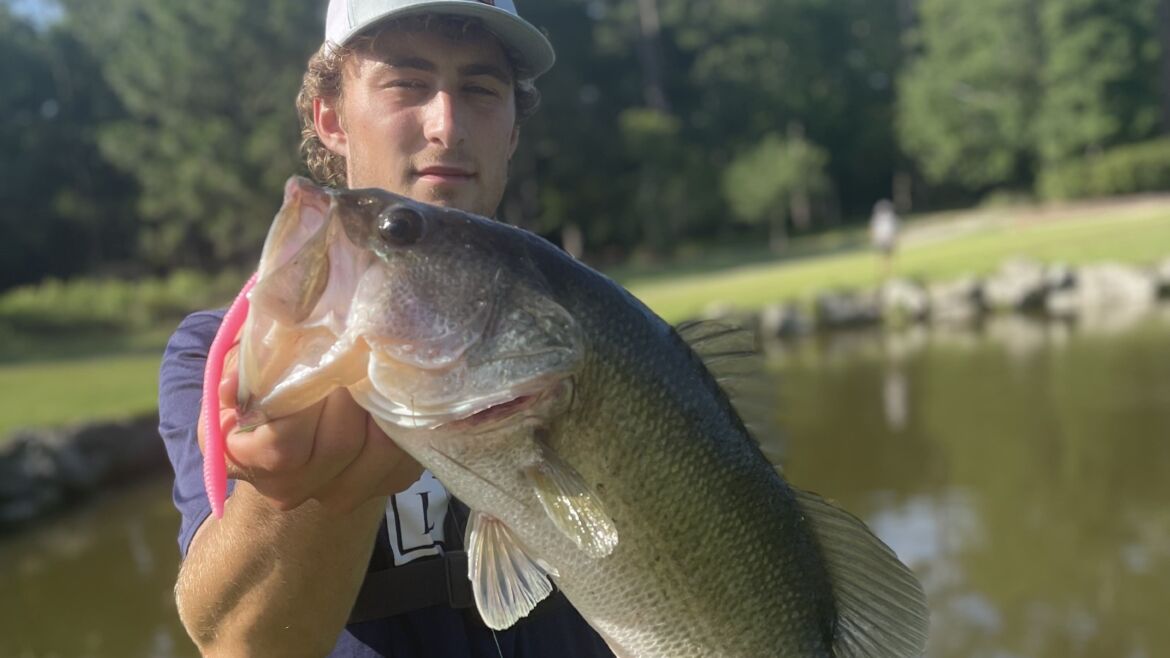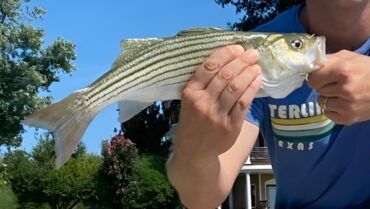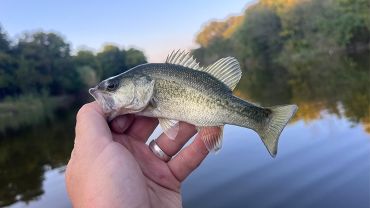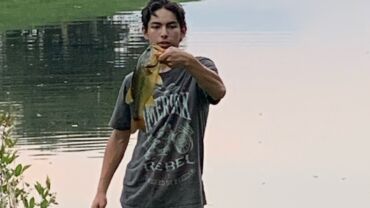Bass fishing has been one of America’s most popular pastimes for a very long time. One of the main reasons for the vast popularity of Bass fishing is its unparalleled accessibility. In most freshwater bodies of water in America, especially in the South, you will be able to find some kind of Bass species whether that be a Striped, Largemouth, or Smallmouth Bass. Because of this level of accessibility, many anglers dive head-first into the Bass fishing sport. However, just like any other sport in the world, success doesn’t come overnight. It often takes years upon years to develop strategies that will best produce Bass. This being said, as anglers, it is extremely important for us to be able to learn effective Bass fishing techniques so we can maximize our day on the water and become the best anglers that we can possibly be. So come along with me as I give you an all-inclusive guide to Bass fishing.
Understanding Bass Behavior
For the sake of this article, we are going to be strictly focusing on the Largemouth Bass as it is by far the most popular species of Bass in the United States. To begin this article, I’m going to give y’all a bit of information regarding Bass behavior. I’ve mentioned it before, but being able to understand the behavior of a fish can have a huge impact on the success of your day. Interestingly enough, the Fishbox App can also help you better understand the behavior of different species due to its extensive research about 50 factors that play into the bite of the fish. With this knowledge at your fingertips giving you recommended baits and locations to fish, there’s almost nothing that can stop you. Don’t wait any longer and download the fishing app today.
Get your personalized fishing map
Answer a quick quiz and get your own personalized fishing map
- Bass Behavior in Different Seasons: Because of the popularity of Largemouth Bass, we know a great deal about how seasons affect them. The only reason Bass are affected by seasons is because of the change in the water temperature. Water temperature has huge implications on the metabolism of the fish which then affects its feeding patterns. In the cold Winter and late Fall months, Largemouth Bass are extremely lethargic. They don’t tend to move very much and definitely don’t want to expend a lot of energy chasing food. For the most part, they head to deeper water and just chill. This causes the bite to be extremely slow. Top water and middle water column baits are just about completely useless during this time as the Bass are deeper and don’t want to exert extra energy. So, if you want to catch a bass in the late Fall and Winter, your best bet is a bait that goes down to the bottom (jig, deep-diving crankbait, etc). Things turn for the better when we get to Spring and Summer as the metabolism of the Largemouth Bass cranks back up. With tons of food due to bluegill spawns in the Spring, Bass are constantly on the move hunting for food. This new energy makes them far easier to catch and also opens up a whole new world of fishing options as live bait and topwater lures come into play. All this being said, don’t let seasons make or break your choice to fish, just be informed so you know how to best deal with the situation.
- Weather and Water Conditions Impact on Bass Fishing: Weather and water conditions both play a big part in the success of your day. For starters, murky water is generally less productive. The Bass can’t see as well which will make it difficult to find your bait, however, perfectly clear water is also not ideal because the Bass will be able to see your bait too well. Ideally, you want semi-cloudy water clarity. Clouds don’t really have too much of an effect on the bite from what I’ve noticed other than when fishing topwater. Topwater fishing is almost exclusively for overcast days. Rain can also play a part in Bass fishing as it can stir up the bass and bring them to the top. However, after it has rained long enough and sediments have begun to pour into the body of water, the water will become very murky. Wind doesn’t have too much of an effect either. The only thing I would say is that you want a little bit of wind so you can have a little bit more cover when you’re fishing so the bass can’t see you as easily.
- How Understanding Bass Behavior Increases Chance of Success: Understanding Bass behavior is a huge way to increase your odds of success on the water. You must know what they are eating and where they are hiding at certain points in the year so you can best tailor your strategic approach to their liking. One example of the importance of understanding Bass behavior is spawn. Because you know that Bass behave extremely aggressively around spawns and often attack anything that comes near their bed, you can better pick a lure to get that angry female to pounce on your bait (for example a swimbait). This is just one of many examples where understanding the behavior of a Bass can come in clutch.
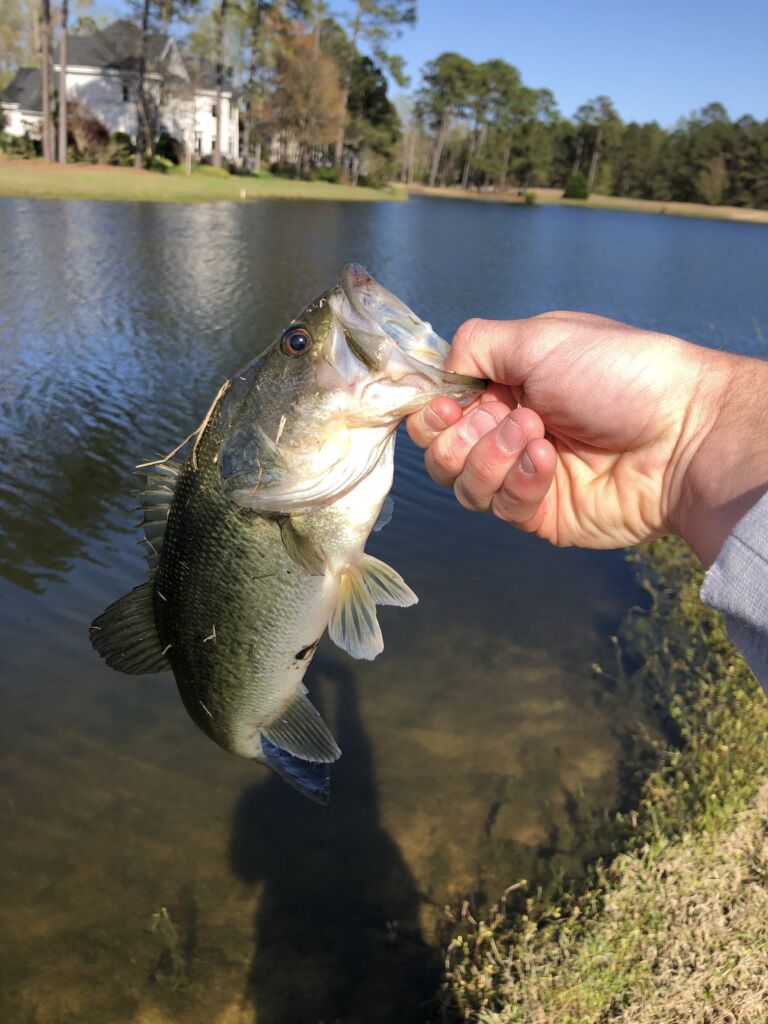
Essential Gear and Equipment
In terms of the necessary gear you need for Bass fishing, it’s actually not all that much. All you need is a rod, a reel, some line, and some lures—that’s it. This is part of the reason why Bass fishing is so popular across the US. You don’t need a ton of gear to be able to go out and catch a Bass. There are a ton of different lures and baits you can use for Bass fishing. In fact, there are so many that we’ve dedicated a whole article to this issue. If you wish to learn more specifics about the different kinds of fishing baits and lures, check out this article here: The Best Bait for Bass Fishing: Proven Strategies for Success. While I’ve talked about lures and baits in the past, I have yet to mention the different types of rods, reels, and lines that play into Bass fishing. First, rods and reels. There are two main types of rod and reel combos: spinning and casting. I utilize both with Bass fishing, but this differs for everyone. In my own experience, I use a spinning combo on baits that need more action put into them: swim baits, finesse worms, etc. However, I generally use casting combos for baits that don’t need much action input like lipless crankbaits, spinnerbaits, etc. Remember, this is just how I use my combos, and this varies from angler to angler. If your system works, then by all means keep using it. Next, let’s talk about the fishing line. There are two main types we can use: braid and monofilament. Braid tends to be stronger, but the downside is there is very little stretch, and it can get wind knots fairly easily. Mono offers less capacity for the same strength of line as braid but does offer a significant increase in line stretch which can be super helpful when setting the hook on a fish. Again, this is completely your preference. I like braids just because of the strength and capacity but I have no problem using mono at all. In terms of selecting gear or terminal tackle for the right equipment, there’s not much that should really change. Maybe if you’re fishing a heavily wooded body of water beef up your line so you don’t break off as easily. Aside from that, there isn’t much reason to change your terminal tackle—only the lures and bait that mentioned in the article above.
Choosing the Right Fishing Spot
Bass like to move around a good bit throughout the year due to the temperature differences across the seasons. This being said, the habitat of a Bass will largely vary at different points in time. As I’ve mentioned before, Winter and cold water force the Bass to choose deeper parts of ponds, lakes, and rivers to make their home that way they can survive. However, as the water warms in the Spring, Bass will move out of the depths and onto banks where they have cover in the form of rocks, tree limbs, and other natural hiding places. At some point in the Spring, the Bass will actually transition to shallow holes near the bank where they spawn. Eventually, the water gets very warm in the shallows, especially in small ponds, and the Bass must move into slightly deeper water in order to not get cooked alive because of the heat. Hopefully, this gives you guys a grasp of the importance of knowing where Bass is throughout the year. Now you don’t have to blindly cast and guess where the fish are. When you are trying to identify prime Bass fishing locations, think like a Bass. Where would you want to hide to avoid sunlight and get a jump on incoming prey. This process should allow you to better identify where Bass should be and make educated casts for more success.
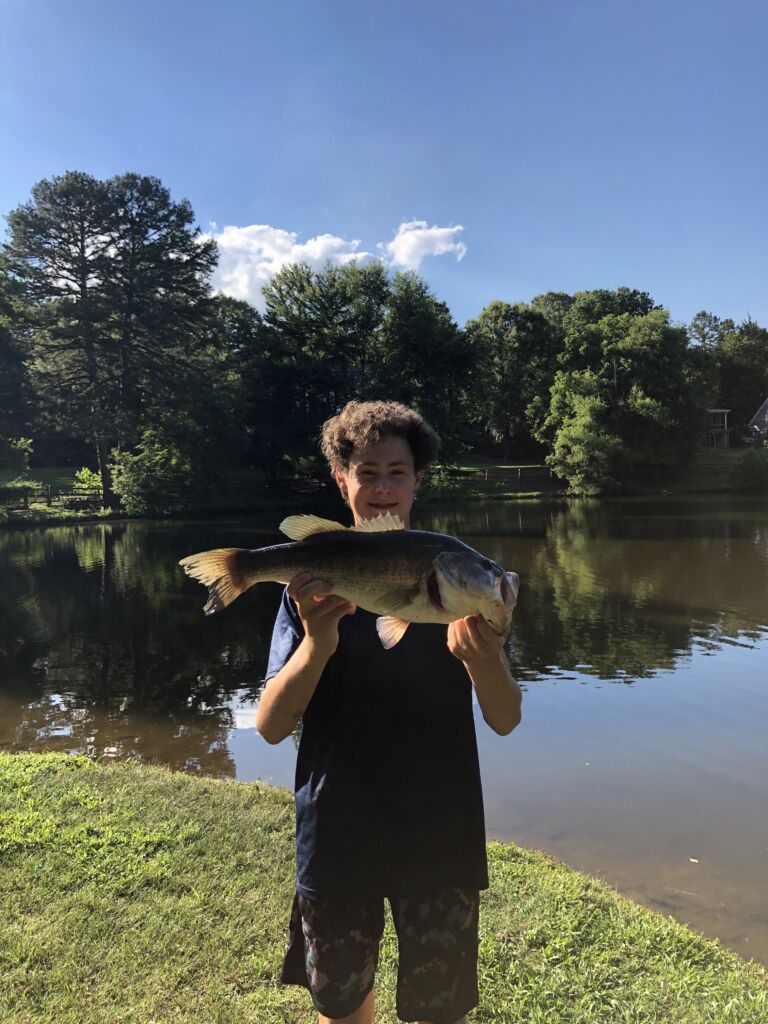
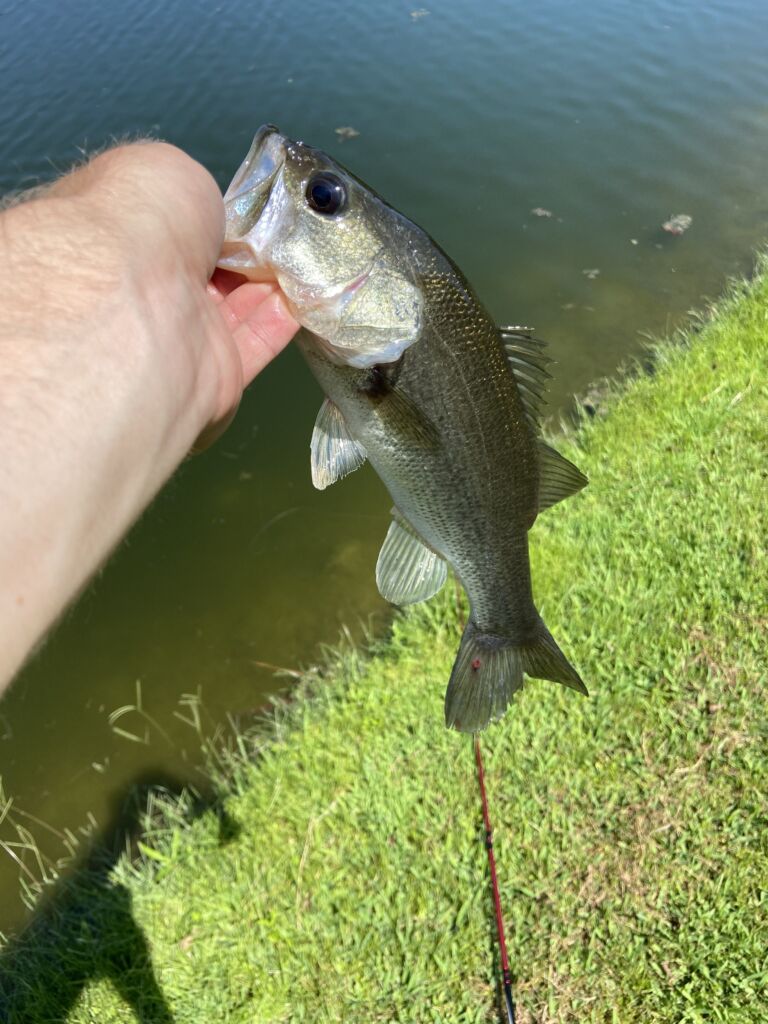
Techniques for Luring Bass
- Lure in the Bass: Your number one goal should be to replicate the natural prey of the Bass as best as possible. You need to make your lure or bait as lifelike as possible in order to give you the best chance of getting a strike from a hungry Bass.
- Different Lures for Different Conditions: I mentioned this above, but when fishing you are almost certainly going to face unique conditions every time. Don’t let this discourage you. My best advice would be to go with what you know in terms of the strategies for a similar situation and then adapt. If you’re bread and butter isn’t working, you gotta switch even if it seems like the right conditions. Fish, especially Bass, are finicking creatures. One day you’ll have them completely figured out and the next you’ll look like you have no clue what you’re doing. So just be willing to change tactics.
- Insights into Topwater, Mid-depth, and Deep-Water Fishing Methods: Before we move on to the next topic, I briefly want to describe your goal in a presentation for each of these three columns of water. For topwater, you are trying to draw attention to the surface with loud pops, lots of splashing, and commotion. You’re supposed to convince the fish that something is struggling on the surface. For mid-depth, you try to convince the Bass that your bait is a natural baitfish—this is why mid-depth baits are generally very shiny. For deep-water, you’re trying to stir up and bounce off the bottom to get a stubborn fish to come to check out your bait.
Season Considerations
- Spring: I heavily utilize creature baits and soft plastics—things like finesse worms, lizards, crawfish, etc. The Bass are both very hungry and they are on the move, so these baits are perfect. Also, try some swimbaits near Bass beds around spawn time. This time of year, you can fish at a fast pace so use this to your advantage.
- Summer: I have found that mid-depth baits work the best in the heat of summer because the temperature of the water has forced the Bass slightly deeper than the spring. You can still fish bait fairly fast in the Summer as well because their energy and metabolism are still high.
- Fall: Bass fishing is gonna start to slow down significantly as the Bass have less energy and retreat into deeper water. Try and fish a little slower if you can because the Bass aren’t going to be willing to move as fast.
- Winter: Just stay home. I’m kidding…kind of. The Bass are super lethargic in the Winter and very hard to coax into biting. However, if you do decide to venture outside, strictly use deep-water baits and fish them slowly.
Read also: Best Time for Bass Fishing: Deciphering Seasonal and Timing Patterns
Bait (and Lure) Presentation Skills
This subsection really only applies to artificial lures—but more specifically action-based artificial lures like trick worms, finesse worms, jigs, swimbaits, etc. For the best results, you have to bring your bait to life. You absolutely cannot fish your bait in one pattern like a robot—believe it or not, Bass can pick up on this. Try mixing up retrieve speeds and depths as well as adding various twitches and bumps into your retrieve pattern. Making your bait’s action unpredictable is the name of the game. You want the fish to be confused and then react in an instant. A constant swimming motion is just not going to cut it and likely won’t elicit a strike. It’s up to you to bring your bait to life—don’t be lazy with it.
Read also: Discover the Best Lures for Bass Fishing: A Comprehensive Guide
Common Mistakes to Avoid
- Don’t get too staid in your ways. Switch and up and use different baits in order to see what the Bass wants the most. Don’t be stubborn and sit on one bait for the entirety of the day. First, because that’s lame. Second, you probably won’t find much success when just utilizing one lure.
- Don’t get lazy. Make every cast and retrieve your best. If you’re lazy with either of these processes, you could potentially miss the fish of a lifetime.
- Don’t put too much stock on the actual success of the day. You’re not working. You’re not doing chores. You’re out in nature—enjoy it.
- Don’t be too hard on yourself or give up too easily because something isn’t working. Stick it out, have some patience, and get the next one.
Personal Experiences and Success Stories
Tips and Tricks:
- Listen to other anglers. For a long time, I thought I was the greatest fisherman to walk the Earth. Newsflash! I wasn’t. Always take advice from other anglers (even if they are younger than you).
- Always take some time to show younger kids how it’s done. Teach them what you know and don’t look down on their fishing ability just because they are young—we all started somewhere.
Get your personalized fishing map
Answer a quick quiz and get your own personalized fishing map
A Quick Personal Story:
Just to share my appreciation for the world of Bass fishing anglers, I just wanted to highlight one story of mine regarding Bass. One time, we were visiting our cousins who had a loaded pond on their property. Of course, the only logical thing to do was to have a Bass fishing tournament. As we neared the end of the tournament, my cousin and I knew we had pretty much lost. We were down by 5 ponds with around 15 minutes remaining and our hopes weren’t high…until I spotted a giant on a little flat bank on the pond. I whipped out my finesse worm and cast it right in front of her face. She swung at it, bit it, and then let go. My heart literally stopped. A few minutes later, she came back to her spot, and I knew I had to get her there. I took one cast, and she whacked it. I set the hook and landed a 7-pound bass—my PB at the time. We ended up winning the tournament and I continue to rub it in my brother’s face to this day.
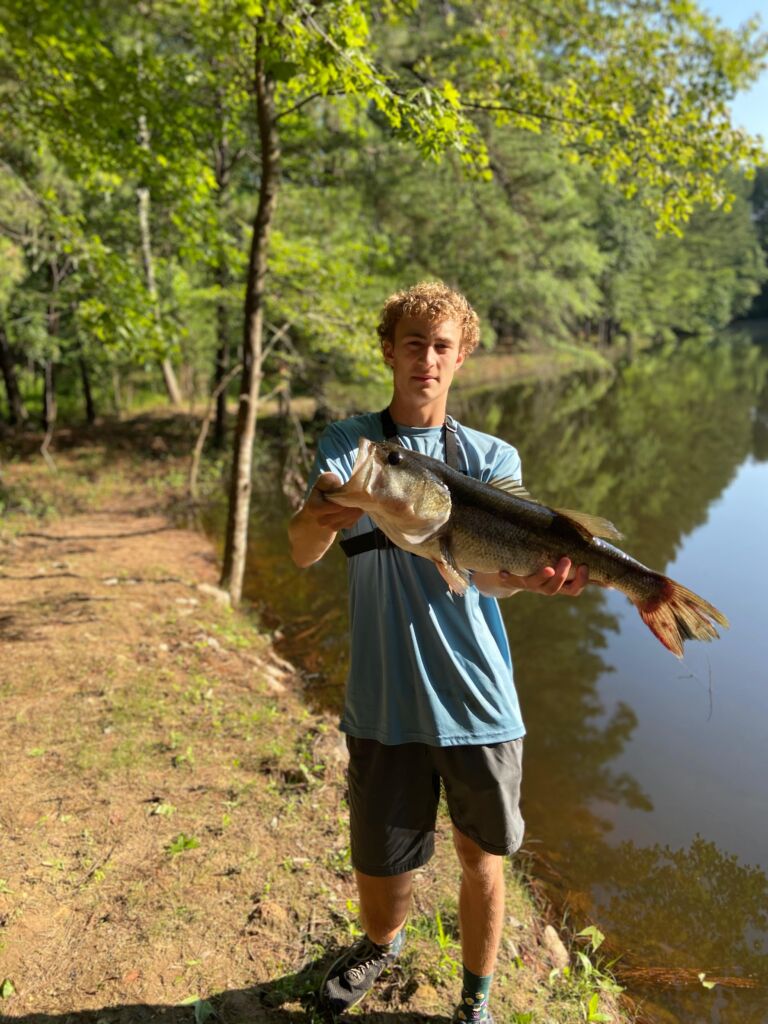
Conclusion
I hope this article has been insightful to my fellow Bass anglers across the country and I was able to help you learn at least one thing that can help you on your own angling journeys. Guys, I can’t emphasize this enough, but reading and watching videos can only get you so far—and not only with Bass fishing—with any fishing. You’ve gotta spend time on the water if you want to get better. Put in the hours and see what happens—you’ll be amazed. For those readers who are adults yet, use your summers wisely. Don’t go off and do stupid stuff with other people. Get your rod out and see if you can break that PB. Get some guys together and have a fun tournament. The sky is truly the limit. I hope you enjoyed this article, and as always, tight lines!
Photo Source: All photos in this article were provided by expert Pierce Latta.
Visit his Instagram profile.
Subscribe to his YouTube channel.
